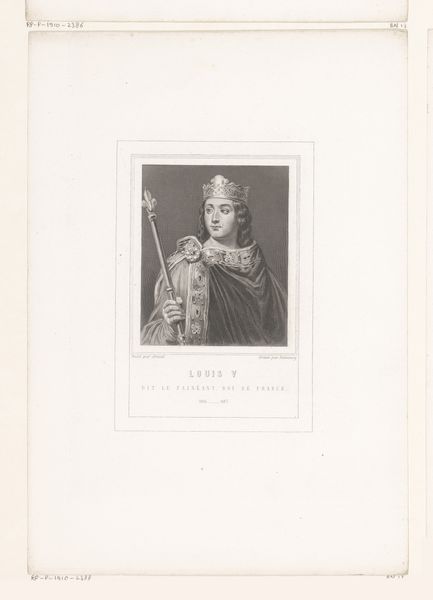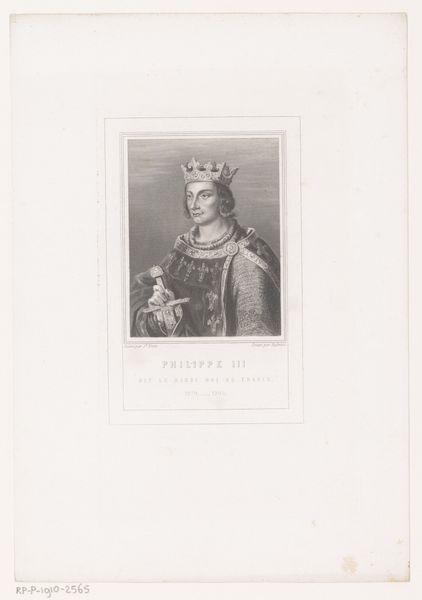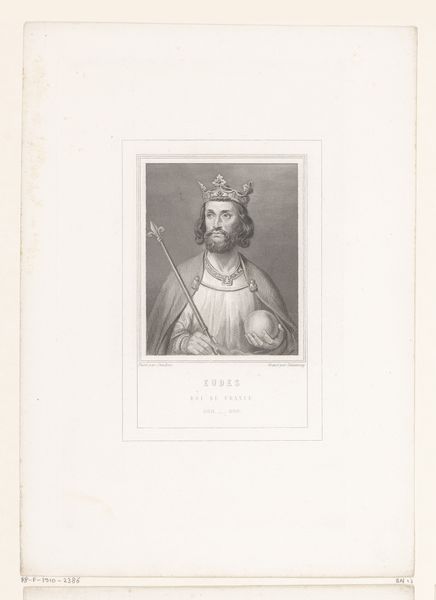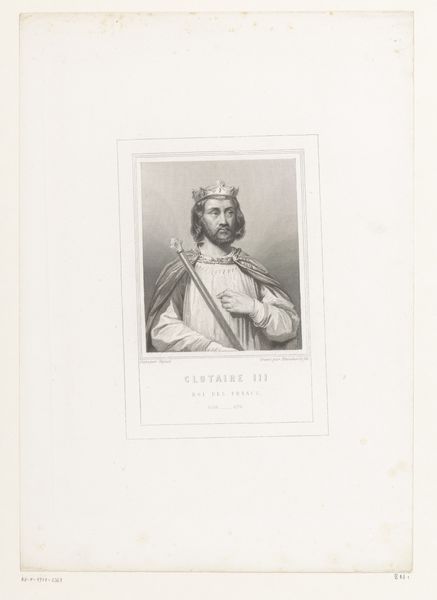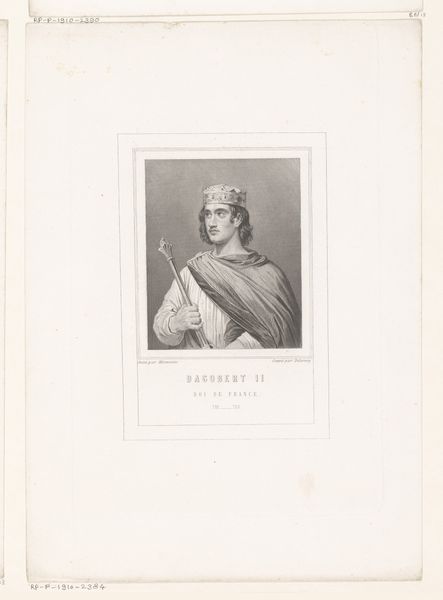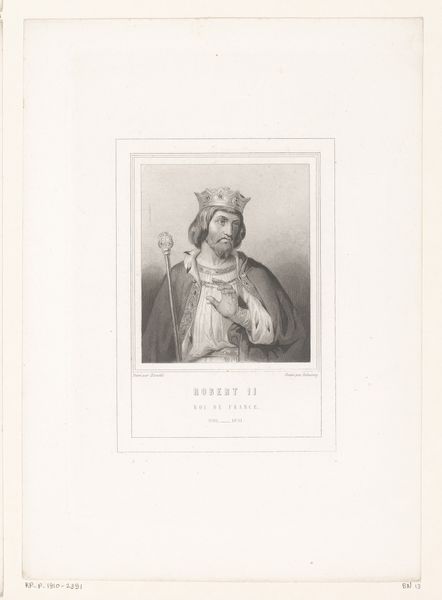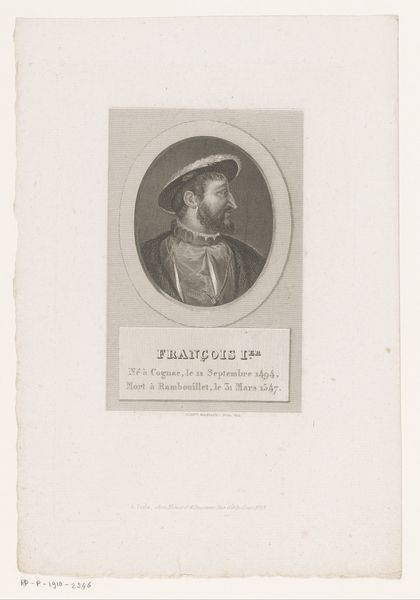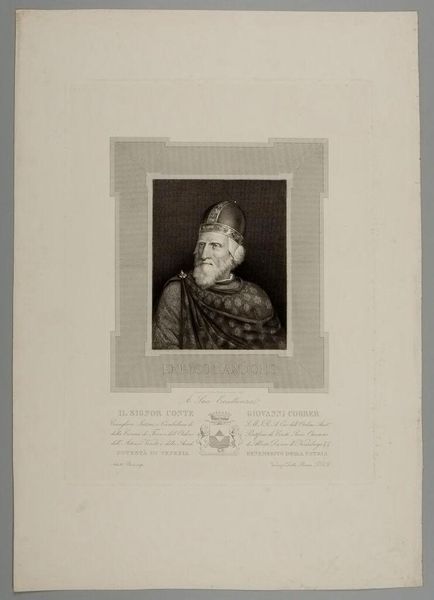
print, engraving
#
portrait
#
neoclacissism
# print
#
history-painting
#
engraving
Dimensions: height 278 mm, width 196 mm
Copyright: Rijks Museum: Open Domain
Curator: Immediately, I see the weight of power bearing down, the intensity is striking, a palpable anxiety. Editor: Let’s take a look at this Neoclassical print by Emile Giroux, titled “Portret van Filips VI, koning van Frankrijk,” placing its creation sometime around the mid-19th century. Curator: The stark monochromatic rendering feels a bit austere, yet…intimate? There's a vulnerability peeking through the regal facade. Editor: Given the period, this work functions within specific power dynamics. Notice how Giroux positions Philippe VI within this history through visual cues like his crown, robes and sword. These symbol are used to solidify the idea of divine power, a common trope in depicting monarchs. Curator: Yes, the conventional trappings of power, but look closer at his face! The way his eyes are cast downward, the subtle pursing of his lips. I see the conflict, the lonely burden of leadership, of carrying the hopes, fears and failures of an entire kingdom. Editor: And what does it mean to depict a king of France during a period defined by revolution, social change, and questioning the role of monarchy? There is something deeply unsettling here. What can feel like vulnerability in this image may speak to a larger project of legitimizing a position increasingly seen as indefensible at the time this work was made. Curator: Or perhaps Giroux saw him as a flawed hero, an individual trapped by circumstance? Isn't that where true understanding, true compassion lies, in acknowledging the messy humanity beneath the crown? Editor: It might also highlight the artificial nature of power. Perhaps Giroux invites us to consider who can wield the symbols of authority and how their relationship with this king might influence his decisions in service to the nation. It reminds us to challenge authority. Curator: Interesting points. Maybe both interpretations hold truth, a simultaneous nod to the man and a questioning of the system that elevates him. What do you see as the most important legacy of portraits of powerful historical figures? Editor: The way portraits like these offer a mirror to our present struggles and inform us of where we stand concerning ideas about power, equity, and access. Curator: I leave with that thought too, considering how that echoes through our time and challenges us to consider. Thanks.
Comments
No comments
Be the first to comment and join the conversation on the ultimate creative platform.
